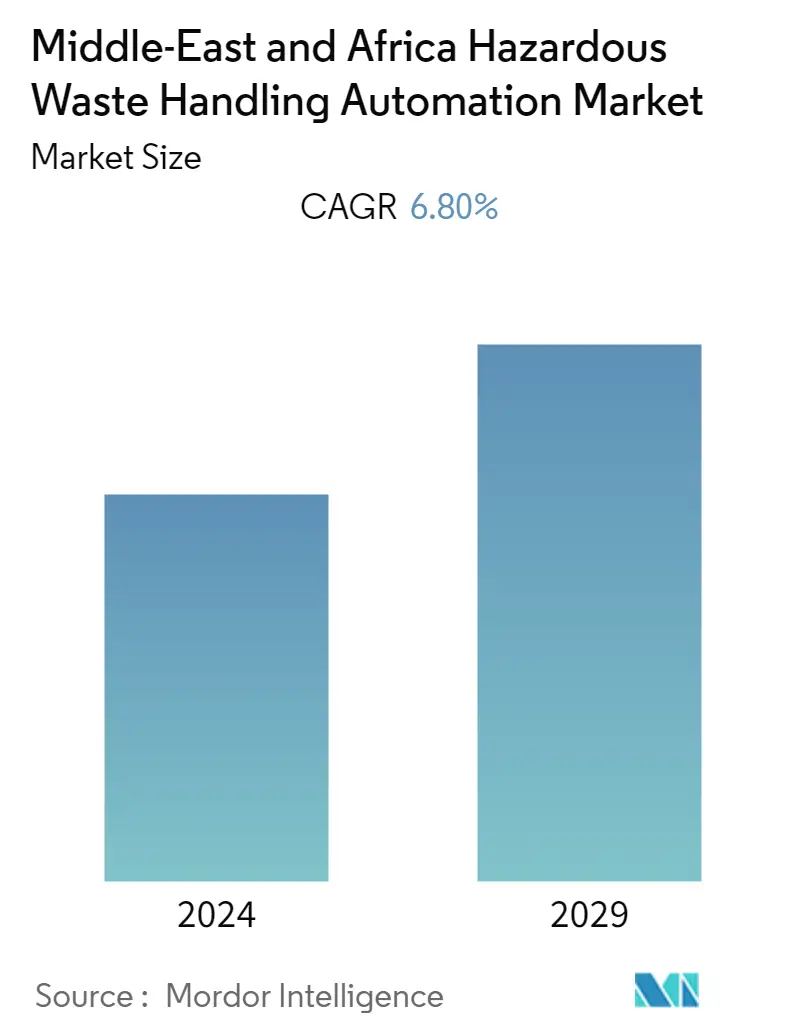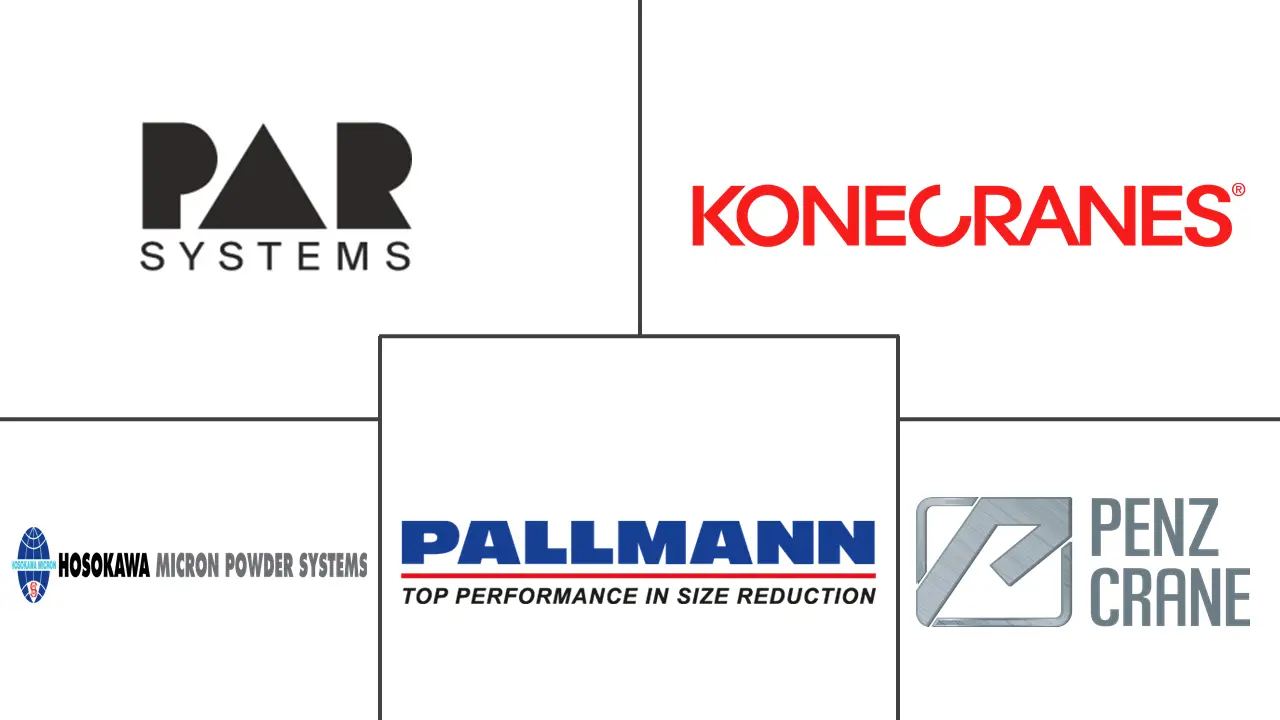Market Size of Middle-East and Africa Hazardous Waste Handling Automation Industry

| Study Period | 2019 - 2029 |
| Base Year For Estimation | 2023 |
| Forecast Data Period | 2024 - 2029 |
| Historical Data Period | 2019 - 2022 |
| CAGR | 6.80 % |
| Market Concentration | Medium |
Major Players
*Disclaimer: Major Players sorted in no particular order |
Need a report that reflects how COVID-19 has impacted this market and its growth?
Middle-East and Africa Hazardous Waste Handling Automation Market Analysis
The Middle-East and Africa hazardous waste handling automation market is expected to register a CAGR of 6.8% during the forecast period (2022-2027). Hazardous waste materials and their management are highly important for the safety of workers and society. Several government regulations and growing awareness among people about sustainability are some of the key factors driving the market growth.
Hazardous waste poses an actual or potential hazard to humans' health and other living organisms or the environment, owing to its toxic, flammable, infectious, and radioactive properties.
The management of hazardous waste is one of the emerging issues in the Middle-East and African region as companies from the developed regions have been dumping their toxic waste in Africa for many years, as regulating measures for hazardous waste management in the region are still not on a par with international legislation. However, the governments in the region are now taking initiatives and are banning this practice as a result of their awareness of growing health concerns.
In the Middle East, a large percentage of hazardous waste is produced from petroleum products and from frequent wars, including shellings, casings, and other types of war remain.
Some of these wastes can be handled manually, while some may require expertise and automation solutions to minimize human contact with the waste. The use of such automation solutions for handling waste also improves process efficiency and reduces the reliance on manual intervention. Thus, concerns about the proper handling of these harmful substances can be eliminated.
Different products used in hazardous waste handling automation include cranes, manipulator arms, and size reduction arms.
As the outbreak of COVID-19 impacted the Middle-East and African region, many types of additional medical and hazardous wastes were generated, including infected masks, gloves, and other protective equipment. This has further augmented the demand for effective hazardous waste handling practices in the region.
Moreover, initiatives such as Power Africa, taken by the United States Agency for International Development (U.S.A.I.D.) and various partners, aim to have 25 million to 30 million new solar connections across Africa by 2030. Such initiatives are expected to generate a significant amount of waste, including expired lead-acid batteries and power backup systems. This is expected to drive the demand for automated hazardous waste handling solutions for efficient and safe handling.
